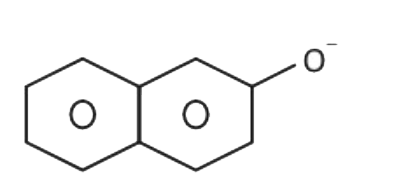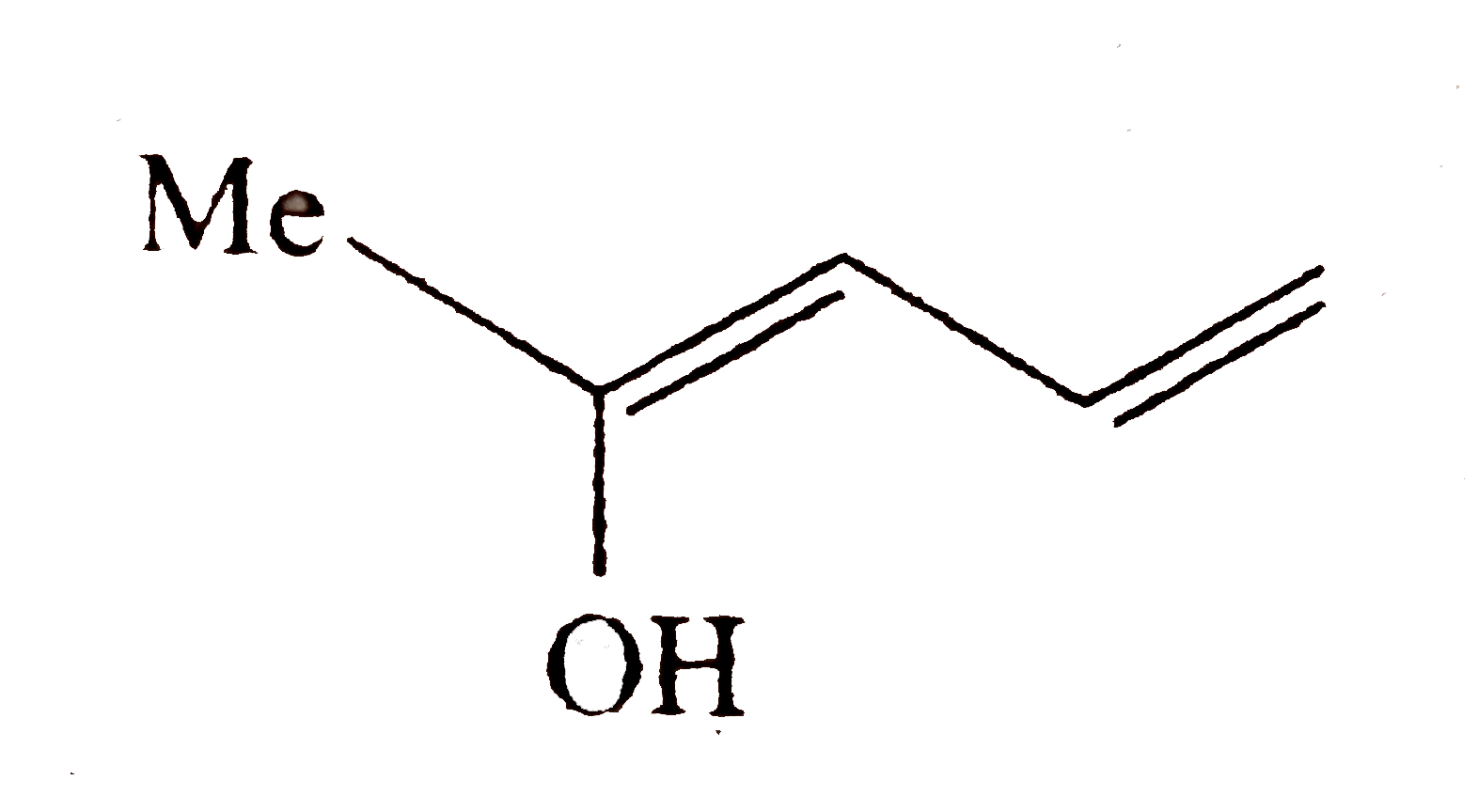Resonance structures can be written for .
O3
NH3
CH4
H2O
The correct Answer is:A
To determine which of the given compounds can have resonance structures, we need to analyze the molecular structures of each compound. Resonance structures are typically found in molecules that have multiple bonds (double or triple bonds) or lone pairs that can participate in bonding. Let's go through the compounds one by one.
1. Identify the Compounds: The compounds given are:
- Ozone (O₃)
- Ammonia (NH₃)
- Methane (CH₄)
- Water (H₂O)
2. Draw the Lewis Structure for Ozone (O₃):
- Ozone consists of three oxygen atoms.
- The structure can be represented as O=O-O, where one bond is a double bond and the other is a single bond.
- The central oxygen has one lone pair, while the terminal oxygens have three lone pairs each.
- This structure allows for resonance because the double bond can shift between the two terminal oxygens.
3. Draw the Lewis Structure for Ammonia (NH₃):
- Ammonia consists of one nitrogen atom bonded to three hydrogen atoms.
- The nitrogen has one lone pair.
- The structure is stable and does not have any multiple bonds, hence it does not exhibit resonance.
4. Draw the Lewis Structure for Methane (CH₄):
- Methane consists of one carbon atom bonded to four hydrogen atoms.
- There are no lone pairs or multiple bonds in this structure.
- Therefore, methane does not exhibit resonance.
5. Draw the Lewis Structure for Water (H₂O):
- Water consists of one oxygen atom bonded to two hydrogen atoms.
- The oxygen has two lone pairs.
- Similar to ammonia and methane, water does not have multiple bonds, so it does not exhibit resonance.
6. Conclusion:
- Among the four compounds, only ozone (O₃) has resonance structures due to the presence of a double bond that can shift between the terminal oxygen atoms.
- Ammonia, methane, and water do not have resonance structures.
Final Answer:
Resonance structures can be written for Ozone (O₃) only.
- Ozone (O₃)
- Ammonia (NH₃)
- Methane (CH₄)
- Water (H₂O)
- Ozone consists of three oxygen atoms.
- The structure can be represented as O=O-O, where one bond is a double bond and the other is a single bond.
- The central oxygen has one lone pair, while the terminal oxygens have three lone pairs each.
- This structure allows for resonance because the double bond can shift between the two terminal oxygens.
- Ammonia consists of one nitrogen atom bonded to three hydrogen atoms.
- The nitrogen has one lone pair.
- The structure is stable and does not have any multiple bonds, hence it does not exhibit resonance.
- Methane consists of one carbon atom bonded to four hydrogen atoms.
- There are no lone pairs or multiple bonds in this structure.
- Therefore, methane does not exhibit resonance.
- Water consists of one oxygen atom bonded to two hydrogen atoms.
- The oxygen has two lone pairs.
- Similar to ammonia and methane, water does not have multiple bonds, so it does not exhibit resonance.
- Among the four compounds, only ozone (O₃) has resonance structures due to the presence of a double bond that can shift between the terminal oxygen atoms.
- Ammonia, methane, and water do not have resonance structures.
Resonance structures can be written for Ozone (O₃) only.
Topper's Solved these Questions
- CHEMICAL BONDING AND MOLECULAR STRUCTUREBOOK - CENGAGE CHEMISTRY ENGLISHCHAPTER - CHEMICAL BONDING AND MOLECULAR STRUCTUREEXERCISE - Exercises Single Correct (Molecular Orbital Theory (Mot))
23 Videos
- CHEMICAL BONDING AND MOLECULAR STRUCTUREBOOK - CENGAGE CHEMISTRY ENGLISHCHAPTER - CHEMICAL BONDING AND MOLECULAR STRUCTUREEXERCISE - Exercises Single Correct (Miscellaneous)
23 Videos
- CHEMICAL BONDING AND MOLECULAR STRUCTUREBOOK - CENGAGE CHEMISTRY ENGLISHCHAPTER - CHEMICAL BONDING AND MOLECULAR STRUCTUREEXERCISE - Exercises Single Correct (Bond Angle)
10 Videos
- ATOMIC STRUCTUREBOOK - CENGAGE CHEMISTRY ENGLISHCHAPTER - ATOMIC STRUCTUREEXERCISE - Concept Applicationexercise(4.3)
19 Videos
- CHEMICAL EQUILIBRIUMBOOK - CENGAGE CHEMISTRY ENGLISHCHAPTER - CHEMICAL EQUILIBRIUMEXERCISE - Subjective type
1 Videos
Similar Questions
Knowledge Check
Which of the following is not a resonance structure of the other?
ACH3−N=C=SandCH3−S−C≡NBCH3−+C=OandCH3−C≡+OCCH3−O∣∣C−OHandCH3−O−∣C=+O−HDCH2=CH−C≡Nand+CH2−CH=C=N−
How many resonance structures are possible for allyl carbocation?
View SolutionIdentify the correct resonance structures of carbon dioxide from the one given below:
View SolutionIdentify the correct resonance structures of carbon dioxide from the one given below:
View SolutionHow many resonating structures are possible for the following structure (including the given structure)?

View SolutionWhich of the following is not a resonance structure of the other?
View SolutionWrite the resonance structures of the given compound.

View SolutionExplain the resonance structure of benzene. What do you understand by resonance hybrid?
View Solution
